Buggtussel Loudspeakers: A Factory Tour
|
Buggtussel Loudspeakers: A Factory Tour |
 |
| A Small Manufacturer with Enormous Promise | |
|
Greg Weaver |
|
|
29 March 2002 |
Address
1701 Vanderbilt Ave.
Portage, Michigan 49024
Phone: 616-321-9660
Website: http://www.buggtussel.com
Humble Beginnings
It was a crisp, clear March dawn that soon gave way to a more temperate morning, climatically more befitting an early summer morning than one of early spring. My original visit to this small manufacturer had been set for the previous weekend, but the onset of a lake effect snowstorm had me postpone out of caution. But this was going to be a special day, both the weather and the day’s events.
The short hour and twenty-minute drive from my home in South Bend to theBuggtussel plant in Portage, just south of Kalamazoo, was made even less tedious by the on board sound system. I was listening to the Black Light Syndrome’s 1997 eponymous album. This power trio match-up of Steve Stevens (formerly guitarist with Billy Idol), Terry Bozzio (drummer for Jeff Beck and Frank Zappa) and Tony Levin (bassist for Peter Gabriel and King Crimson) has a distinctly 70’s feel though it was written and recorded in the late 90’s. If you were, as me, a teen in the late 60’s/early 70’s, I would urge you to go out of your way to look up this unrecognized classic.
Though the day had started out beautifully, as I drove northeast, it started to take a turn for the worse, with blustering winds reaching 50 and 60 miles an hour. The temperature started to plummet as well, having dropped to something like 35 degrees by the time I arrived at the over 5000 square foot facility, just behind Lumberman’s Lumber company on Vanderbilt Ave.
Being there…
I entered the reception area, a small room with a desk by the door and a bookshelf loaded with issues of AES journals, The Absolute Sound and Stereophile, and was greeted by both the doorbell and security system, a 4 year old German Shepard/Rottweiler mix named Beethoven. She is loud, but her noise making ability belies the big puppy behind it all. I was met with hearty handshakes from both Doug Knudsen, the business manager, and Dr. Kevin Blair, owner and chief designer.
|
|
Kevin’s Ph.D. was earned in neuroscience/zoology, but his dedication to audio excellence in general and loudspeakers in particular dates back to the late 1970’s. Though primarily trained in science, (his father was a student of the violin, recorded music and an Organic Chemist), he also studied voice and piano. His undergraduate work was in biology, theater and religion. His graduate work was also in biology, his masters in insecticide toxicology, but by the early 1980’s, he migrated to making recordings of live music and nature, using both conventional and binaural recording techniques. By the mid 1980’s, Kevin initiated his foray into the development of instrumentation, leading to, among other things, a transducer utilized in the ground breaking POSDAM (POSition Dependent Amplitude Modulation) analysis of driver dynamic linearity and symmetry (see JAES Reprint 5024 H-5 from 1999). After a few minutes of pleasantries, including discussion about Beethoven and the weather (which was drastically changing for the worse), unpacking and preparing my Nikon E950 and getting my note pad ready, we took our tour.
The room right beside the entry way is a design room, with test equipment and amplifiers at one end, and a giant treated baffle at the other. The baffle permits mounting of any driver under test for things like pulse response and delay. The room is small, but given Kevin’s extensive scientific background, has played a key roll in development of the company’s current offering of six speakers and a sub.
|
|
The next room I saw was the computer office, the room where e-correspondence is handled and computer modeling is done, and then we moved to the electronics assembly room. This is a good sized room, lined on two sides with a full assembly bench, sporting several soldering stations and loaded with bins full of raw parts, control knobs and circuit boards. Kevin said that, besides manufacturing the crossovers for their line and amplification for their subwoofers, Buggtussel is contracted to do OEM work for other manufacturers. This is obviously a busy room.
|
|
The sound room, for both demonstrating products to visitors and final listening testing, is a largish room set up on the diagonal. One corner is the center of the “back wall”, extending away, as the speakers themselves, to the left and right. One of the large powered Tegmentum subwoofers is situated in the center of the back corner. In front of it and between the speakers reside several amplifiers, including a pair of first generation deHavilland A-45 monos as well as a classic NAD 216. Following along the right side wall to the corner, we find a rack containing the rest of the audio equipment, which includes a preamp built by Kevin, as well as all the source products. There are record cleaners from both VPI and Nitty Gritty.
|
|
When asking Kevin why he had both, he indicated that he wanted to be able to test his patented Vinyl-Zyme with both products. Vinyl-Zyme is a record cleaning solution not based on alcohol solvents or surfactants, but rather, on natural enzymes derived from plants. Its enzymatic action mimics the biological digestion process to break microbial attachment of fungi and bacteria, leaving the record a non-supportive surface for those contaminants. Maybe we’ll explore this further in the future, because it is a very effective product.
Next, we moved into the enormous 2,000 plus square foot assembly area. Equipped with table saws, drill presses and a host of other tools and housing the raw materials used to assemble the cabinets, this is the loudspeaker milling area. Using a dense, hardwood fiber-board for the structure of each loudspeaker cabinet, each panel is cut and assembled by hand; no CNC milling machines or pattern cutters here, just human artistry. This leads to a quality of craftsmanship that can only be found in products such as these from small, conscientious manufactures. Besides Kevin and Doug, Buggtussel employs two other production managers, Dave Nye, who runs the day shift, and Joel Witherell, the night shift manager. Since Joel lives some two hours, he arrives on Monday and stays on site until the weekend. This is one dedicated group of individuals.
|
|
The next smallish room we enter houses a video system and some beta products Kevin is developing for a more affordable line of video-based speakers. The drivers here look more standard, as the price points will be a bit lower. But they are being developed with the same type of performance in mind. I am interested in keeping an eye on this product line, as it will likely come to be a very popular group of products. Just off this second audition room lies what I find to be a very special room, the room where Kevin does most of his driver modification.
What makes a bugg tussel, anyway?
Though starting off with drivers from the likes of Vifa and Focal, any semblance to the “stock” drivers soon gives way to the significant mechanical and sonic improvements that Kevin imparts. The Vifa tweeter goes trough a tremendous metamorphosis. The rear cap is removed, allowing for the back wave of the tweeter to be damped into an approximately 1-liter chamber once mounted in the host speaker. This is not just some unspecified space, but rather a controlled one in which Kevin utilizes a group of damping foams fabricated specifically to his specifications. He is quick to point out that by removing the rear cap, an output decrease of 2 dB will be noticed with the tweeter. It is also imperative to note that the lost 2 dB is comprised entirely of mechanical distortions reintroduced to the pistonic motion of the driver from the back wave trapped by the cap and not real effective tweeter output in the first place. Kevin more than makes up for this loss with the modification the motor structure itself, increasing the magnetic force factor (increasing the BL output) of the material used.
|
|
Next, rather than using a much more common anodization process, Kevin uses a more controllable, and yes, more expensive, vapor deposition system. Anodizing may be seen as something similar to electroplating, in that an anodic film is built and combined with the material being treated by passing an electrical current through an acid electrolyte bath in which the material to be treated is immersed. Using a Sputter Coater from an electron microscopy laboratory and careful control of both current and voltage, Kevin is able to control the application of 24-karat gold to within a tolerance of just angstroms. An angstrom is a unit of length equal to one ten-billionth of a meter. Can you say, “Mighty small?” This plating is done to stabilize the dome structure and reduce and control breakup modes, and the more accurately it can be performed, the higher the level of performance which can be achieved. He also modifies the dome suspension itself to further improve linearity and symmetry.
By the time he is done, this tweeter shares little in common with the driver that came in his door. After living with a pair of Kevin’s Lemniscus speakers for the better part of a month now, I can tell you that this painstaking work is not lost on the end result. This is by far the most natural sounding yet revealing tweeter I’ve ever heard in my home and easily bests some tweeters I’ve heard in speakers costing $14,000 to $20,000. But, I’ll be covering this and much more in my upcoming review of the Lemniscus. Let’s get back to the tour, shall we?
|
|
The finish room is nearly as large as the assembly area, and is just off that area in a separate section of the building, permitting the isolation of all the dust and other possible contaminants from the assembly area. This room has a powerful ventilation system and has a large “hood” area for applying the finish to the speaker cabinets after they are veneered with real wood. Standard finishes are Natural Cherry and Blonde Oak, but exotic Rosewood, Zebrawood, Maple, Walnut and Mahogany are available as well. The veneer’s are stored and cut in a special elevated section of the finish room, and are taken from that cutting area to the speaker at the ground level for application. This area is also where the speakers are boxed or crated, depending on size, and prepared for shipping to one of the 10 current Buggtussel dealers.
|
|
Retail outlets include locations in Kalamazoo, MI, Madison, WI, Philadelphia, PA, New Orleans, LA, Reno, NV, Santa Rosa, CA, Singapore and Australia. There are also two web-based dealers, FS Audio and Hurricane Hi-Fi. I would look for more retail outlets soon on the east coast, as Doug has mentioned that they have teamed up with a Rep Firm who will be helping to spread the good Bugg word from Maine to Florida.
|
|
All in all, this is a first class facility for the production of a beautiful and superbly crafted, highly musical product. When we had finished touring the facility, we all piled into the company van, Beethoven included, and braved the now blistering cold. It had dropped to about 20 degrees as we headed off to the Mercury, a local sports bar, for a brew, a bite and some more conversation.
Buggtussel has only recently taken over these spacious and functional spaces. From 1996 though 1998, the entire shop was only a mere 400 square feet, which included the listening area! Kevin laughs as he tells of the old sweet spot being at the center of the table saw. I have to tell you that this new location is a very fitting space for the building of such lovely music making devices.
One of the most fascinating things about the product line is the honest “family” sonic signature. Though some companies claim that the line is developed and voiced as a “family”, retaining a recognizable family voice across the entire line, Kevin actually does it. The identical Aual gold-plated tweeter is used in EVERY model pair, from the $1,900/pr Cingulate to the $10,000/pr Coeruleus. The best news for the budget conscious audiophile is that they offer four very exciting models under $4,000. There is the aforementioned Cingulate, the Solitarious at $2,600/pr, the $1,700/ea Pallidus, (built for use in a stereo pair, as a single center channel or for all five home theater channels in an L/C/R application) and the Amygdala at $4,000/pr. Funny names, you say? Every model in the line carries a Latin name derived from some part of neurology or the brain. This is a unique product line, one that deserves the closer attention and recognition of the audiophile community.
|
|
As we talk over our second libation, Kevin discuses his years spent perfecting and developing the q-TSAL® (quasi- Thiele/Small Actuated Labyrinth) transmission line, which he feels represents the pinnacle of transmission line evolution. Though fundamental research into transmission line acoustics began in 1981, most people still design with the highly unpredictable ¼ Λ (lambda) method. Through years of his own testing and the application of modern electro-acoustical filter theory to the real life mechanics of drivers, cabinets and labyrinth reactance, he feels that he has been able to successfully achieve all the theoretical benefits of transmission line loading and has incorporated them into the Buggtussel lineup. Let me tell you music fans, it works!
After some sharing of tales both audiophile and retail, I thanked my hosts for a very informative and fascinating day. After leaving the Mercury and arriving back at the plant, I scraped the frozen precipitation from my windows, and headed home in the freezing weather and swirling winds. I had learned much in what had been both a tempestuous and very eventful day. Buggtussel is one serious loudspeaker company, driven by individuals whose own personal love of music has compelled them to produce one of the most exciting loudspeaker lines I have yet run into. Take my word; you will be hearing a lot more about and from them, hopefully very soon!
![]()
Don’t forget to bookmark us! (CTRL-SHFT-D)
Stereo Times Masthead
Publisher/Founder
Clement Perry
Editor
Dave Thomas
Senior Editors
Frank Alles, Mike Girardi, Russell Lichter, Terry London, Moreno Mitchell, Paul Szabady, Bill Wells, Mike Wright, and Stephen Yan,
Current Contributors
David Abramson, Tim Barrall, Dave Allison, Ron Cook, Lewis Dardick, John Hoffman, Dan Secula, Don Shaulis, Greg Simmons, Eric Teh, Greg Voth, Richard Willie, Ed Van Winkle, Rob Dockery, Richard Doran, and Daveed Turek
Site Management Clement Perry
Ad Designer: Martin Perry



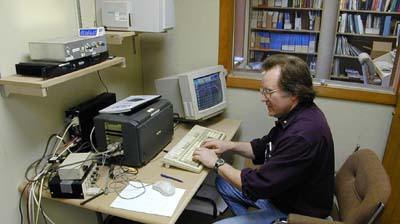
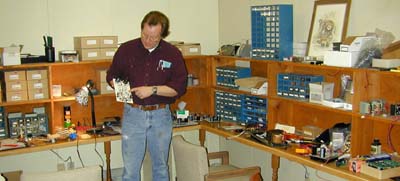
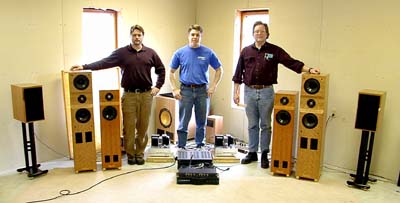

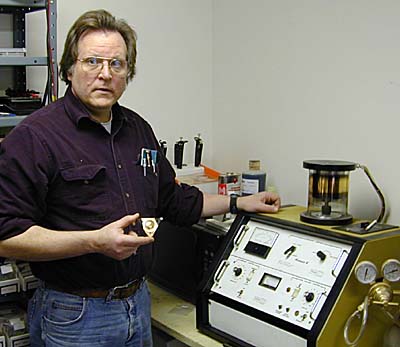
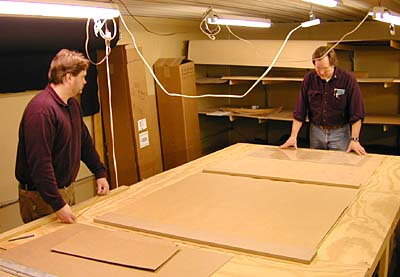
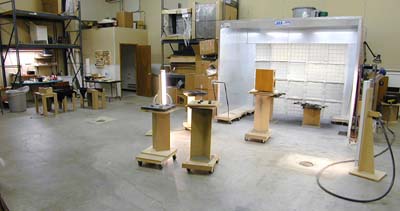
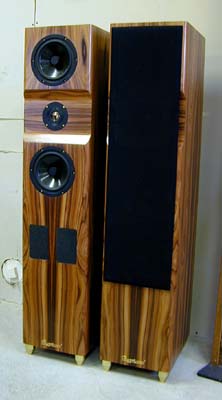
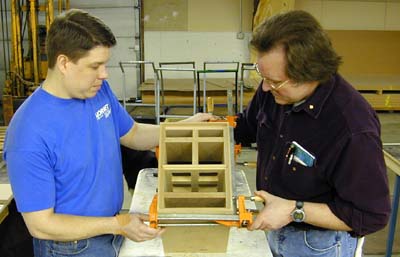
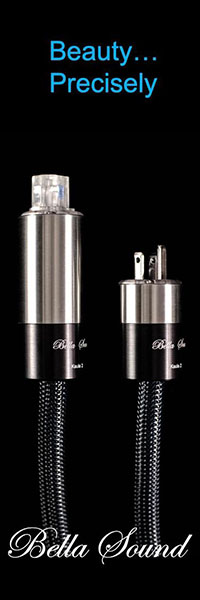


Be the first to comment on: Buggtussel Loudspeakers: A Factory Tour